Tohoku Rokkonsai 2013
by Scott, staff writer of japan-guide.com
This journal is a log of my travels within Japan. Here you'll find my personal opinions on the places I've been and the things I've seen. Also expect to see the occasional review and editorial. Thanks for reading.
| previous post |
| next post |
2013/06/01 - Tohoku Rokkonsai 2013

The Tohoku Region in northern Japan has some really amazing summer festivals, most of which are held during the warm summer nights of early August. Some of the festivals are quite famous, such as the Three Great Tohoku Festivals (Aomori Nebuta, Akita Kanto, and Sendai Tanabata), and draw hundreds of thousands of visitors who go to experience the unique regional dances, towering floats, charismatic performances and lively festival atmospheres that take over the cities.
This weekend was the 2013 Tohoku Rokkonsai, a sort of super festival that showcases the best festivals from all six prefectures of the Tohoku Region in a big parade. The aim of the Rokkonsai is to join the region hit hardest by the March 2011 Disaster together in support of one another and remind the world of their resolve to recover, rebuild, and keep the disaster hit area at the forefront of the public eye. In return, visitors are treated to a really special experience where they can see some of the best Japanese festivals together in one place.


This was the third Rokkonsai Festival ever held. The first took place in Sendai just months after the earthquake, while the second was held in Morioka, Iwate Prefecture. This year the host was Fukushima City which has suffered tremendously from to the stricken nuclear power plant. This weekend, however, the city was filled to capacity with over 250,000 people showing up for the festival.
During the Rokkonsai many of the city center's parks and schools were turned into festival sites, featuring stage events, food stalls, and souvenir shops selling local specialties from the different Tohoku prefectures. Various performances were held on the stages including lots of taiko drumming, singing and dance shows.



The centerpiece of the festival was a large parade where each prefecture presented its most famous, iconic festival. The parade was held over two days (with almost identical programs on each day) and featured 1000 performers, dancers and musicians. These included performances of the Akita Kanto, Fukushima Waraji, Yamagata Hanagasa, Sendai Suzume Odori, Morioka Sansa Odori and Aomori Nebuta festivals.
As an added bonus, this year's parade kicked off with an air show performed by the Blue Impulse, the air acrobatic team of the Japan Air Self Defense Force. The Blue Impulse have an added connection to the Tohoku Region as their base near Matsushima was also badly hit by the tsunami. The squadron performed thirty minutes of stunts and formations over the parade route, much to the delight of the crowd.




The parade began after the air show, with each festival troupe traveling down the one kilometer long parade route:
Akita Kanto Matsuri (more info)
The Kanto Matsuri ("pole lantern festival") from Akita City features an impressive balancing act where performers lift large arrays of paper lanterns high up into the air. Called kanto, the lanterns are fixed to bamboo poles which measure as much as 12 meters tall and weigh upwards of 50 kilograms each.
The kanto are lifted up by a single performer, who extends the poles one section at a time to the sound of drums, flutes and onlookers chanting "dokkoisho, dokkoisho". Once extended, the performers attempt special techniques such as balancing the kanto with one hand, on their forehead, their shoulder, or on their hip. The most skilled can balance the kanto while waving fans and umbrellas in their free hands.
The Rokkonsai featured 16 kanto and 110 performers spread out along the parade route. Unfortunately there were pretty strong winds that made it difficult to keep the kanto balanced. Although they weren't able to extend the poles to their full height, the performers were still able to pull off many of the advanced techniques and put on a good show for the crowd. If anything it was more exciting as the wind made it all that more harrowing to watch.





Fukushima Waraji Festival (more info)
Next down the route was the host city's Fukushima Waraji Festival. This annual celebration features a festive parade where giant straw sandals (waraji) are carried through the streets. The main waraji, which measures 12 meters and is recognized as the largest straw sandal in Japan, is eventually dedicated to Haguro Shrine on nearby Mount Shinobu. The festival also has dance contests, where teams compete with dances set to the festival's hip hop and reggae style songs.
During the Rokkonsai the large waraji was carried down the parade route, meandering from side to side and turning about. It was accompanied by two smaller waraji carried by children, and teams of hip-hop dancers.

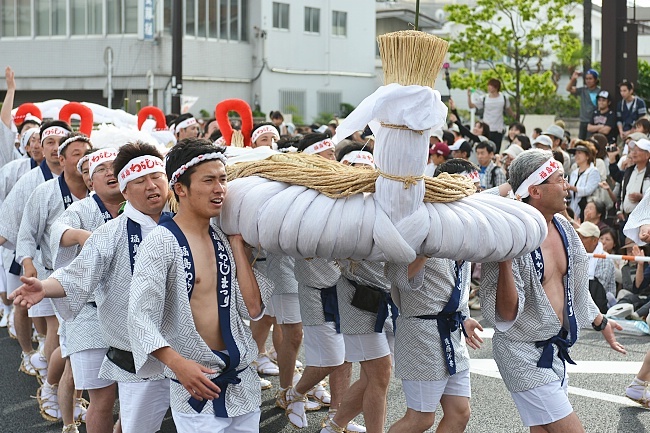


Yamagata Hanagasa Festival (more info)
Next up was the Yamagata Hanagasa Festival. It is said that over a million people visit Yamagata every year to see this festival's parade which includes decorated floats and over 10,000 flower adorned dancers who dance choreographed dances involving their trademark flower-clad straw hats. Recently, the Yamagata Hanagasa was added as a fourth member of the Great Tohoku Festivals.
Several teams of Hanagasa dancers performed for the Rokkonsai parade. One of the teams was made up of students from the Tohoku University of Art and Design.




Sendai Tanabata Festival (more info)
The Sendai Tanabata Festival, held throughout Downtown Sendai is one of the largest Tanabata celebrations in Japan. During the festival thousands of giant colorful streamers and other decorations are hung throughout the Sendai's shopping arcades, while dances and performances are held around the city.
Sendai's tanabata streamers could be seen all around the Rokkonsai Festival decorating the stages and festival sites. The parade however, featured the Sendai Suzume Odori (sparrow dance), an entertaining dance performed during Sendai's Aoba Matsuri. The dancers skip, jump and twirl about mimicking the movements of a sparrow accompanied by musicians playing flutes and taiko drums. Before the festival I had no idea what to expect for this performance, but the dancers were amazing and to me they stole the show.
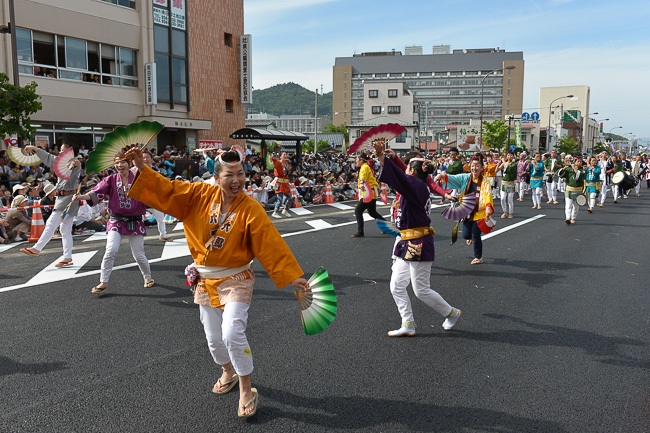



Morioka Sansa Odori (official English pdf)
The next festival featured in the parade was the Morioka Sansa Odori from Iwate Prefecture. This huge festival includes a parade of over 10,000 drummers and holds the Guinness World Record for the world's largest simultaneous drum performance. Five Miss Sansa Odori Dancers lead the drummers who are made up of various groups from around the prefecture.
Though it didn't break any records, the Rokkonsai version of the festival included about 140 drummers and dancers. The enthusiastic dancing by the Miss Sansa Odori Dancers and the well choreographed drumming made this another of my favorite parts of the parade, and something that I'd like to check out in the future.


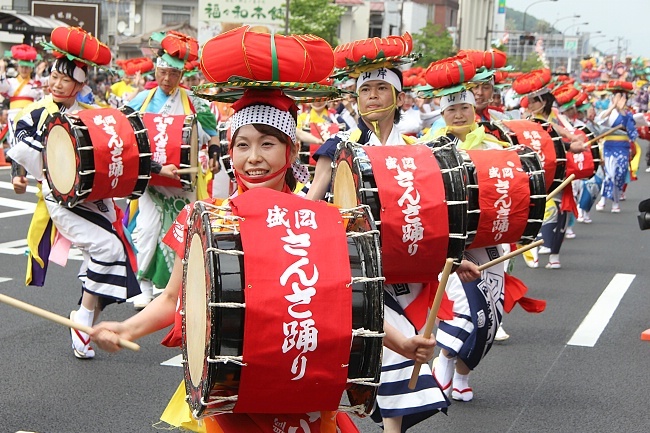


Aomori Nebuta (more info)
Finishing up the parade was one of the large floats from the Aomori Nebuta, the largest and most famous of the Nebuta festivals that take place around Aomori Prefecture. The enormous lantern floats from the Aomori Nebuta can be as large as 9 meters wide and 5 meters tall, and usually depict gods, historical or mythical figures from Japanese and Chinese culture among other characters. During the evenings of the festival the floats are pulled through the streets while flanked by large taiko drums, musicians and dancers.
The Rokkonsai featured a single float which barely fit its way down the two lane parade route. It was accompanied by taiko players and enthusiastic Haneto dancers, who skip/danced their way down the street in their funny hats and yukata clad in with bells.


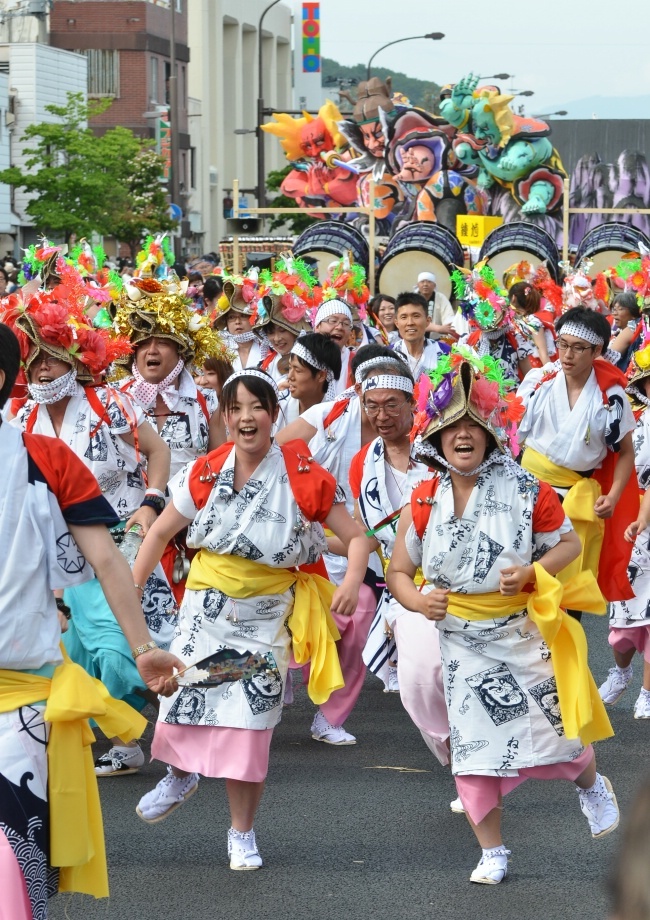
As the parade wrapped up, the performers gathered to walk back through the parade route together, stopping to wave to the crowds along the way. It's not clear yet whether the Rokkonsai will be held again in 2014, but I hope it does as it was a really enjoyable way to experience the best of the Tohoku festivals. I've always thought that festivals such as the Kanto Matsuri and Aomori Nebuta were some of the most fun and memorable experiences I've had in Japan, and thanks to the Rokkonsai I know of several more to check out in the future.
2013 Schedule of the actual festivals:
Akita Kanto: August 3-6
Fukushima Waraji: August 2-3
Yamagata Hanagasa: August 5-7
Sendai Tanabata: August 6-8
Morioka Sansa Odori: August 1-4
Aomori Nebuta: August 2-7
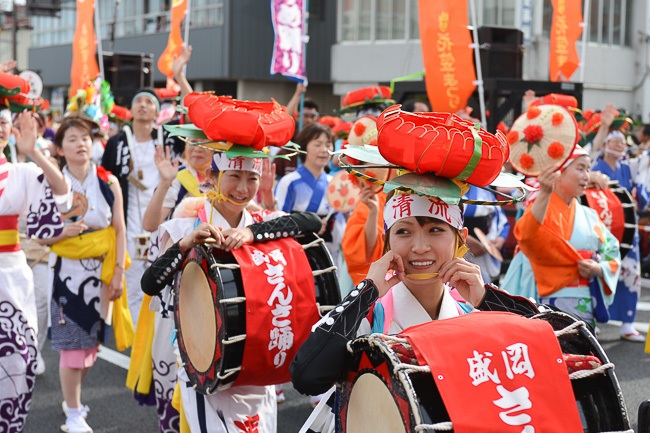

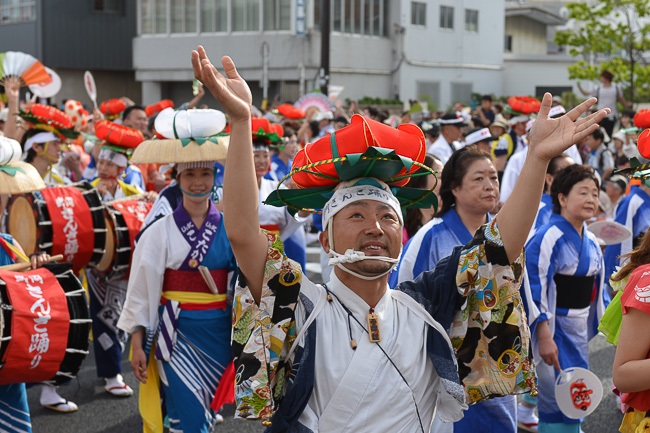
| previous post |
| next post |


